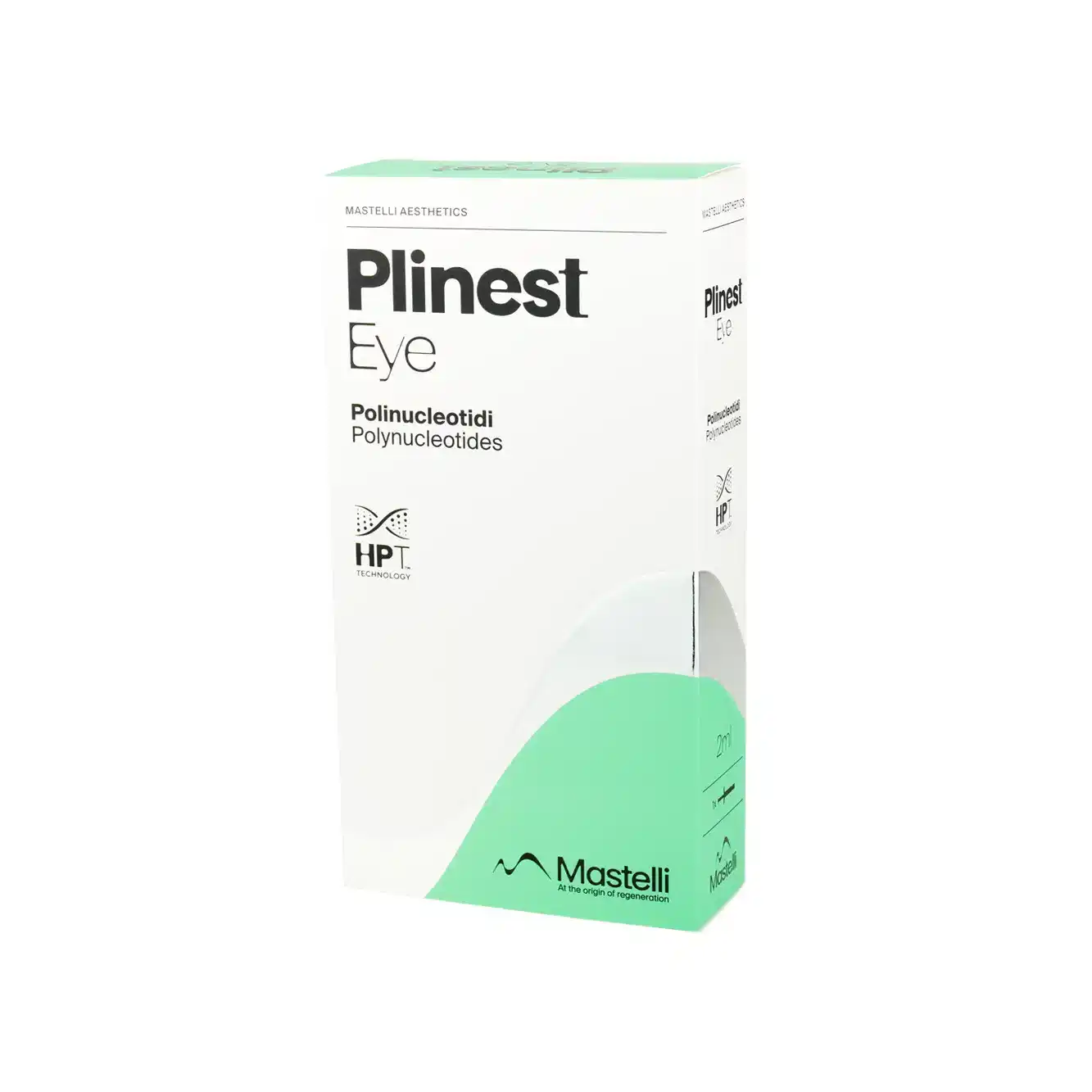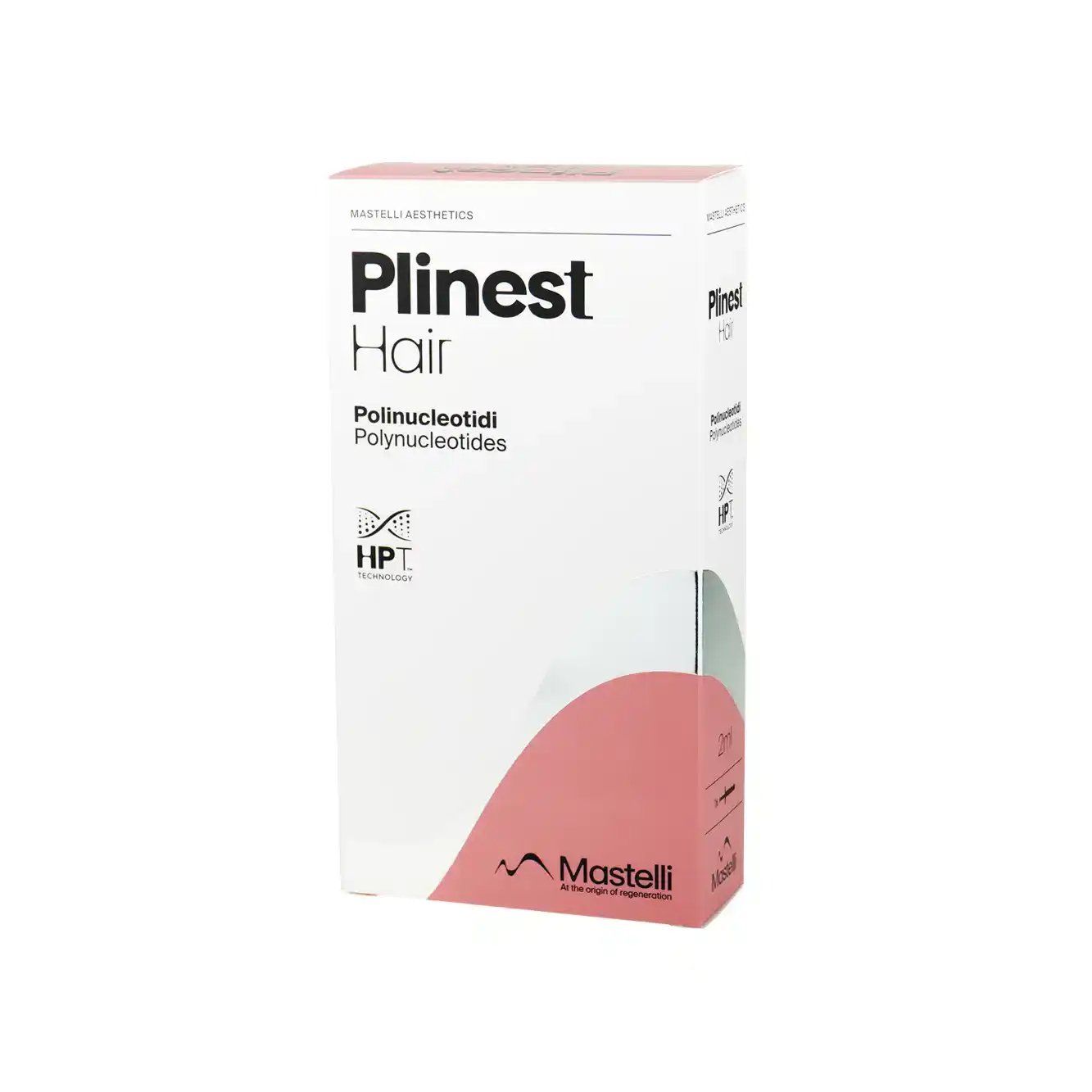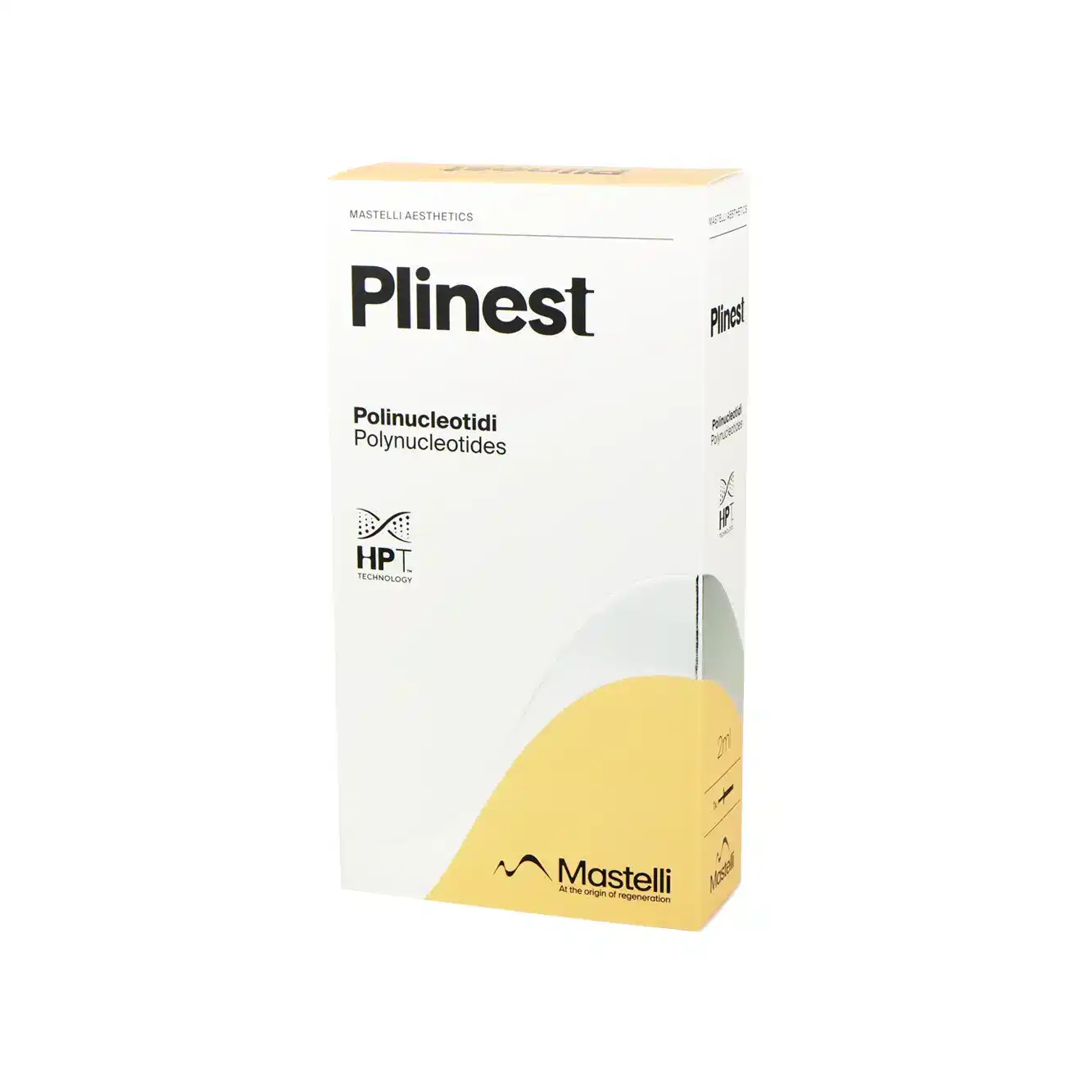Only for Licensed Professionals
Only for Licensed Professionals
.webp)
Plinest vs Nucleofill – Comparing Polynucleotides
David Fuller
Last Updated On: June 16, 2025
Polynucleotides, the building blocks of DNA and RNA, have recently captured the spotlight in aesthetic medicine due to their ability to influence gene expression and stimulate tissue regeneration. Research has shown that these complex molecules can work wonders for improving skin texture, reducing the appearance of wrinkles, and revitalizing overall facial aesthetics.
In this evolving field, Plinest and Nucleofill stand out as two leading polynucleotide-based treatments, each offering promising results in skin rejuvenation. However, while they share similar goals, their formulations, mechanisms of action, and applications vary.
This article dives deep into the unique qualities of Plinest and Nucleofill, highlighting their key differences and helping you determine which treatment might be the best fit for your skincare needs.
Key Takeaways
- Plinest features a higher concentration of long-chain polynucleotides, making it denser and ideal for deeper skin remodeling.
- Nucleofill has a lighter formulation, ideal for superficial hydration and sensitive or younger skin.
- Plinest is recommended for mature or scar-prone skin, while Nucleofill provides quick hydration and a plumping effect.
- Nucleofill typically requires 3–4 treatment sessions, whereas Plinest involves 2–3 sessions with longer intervals between them.
- Nucleofill is associated with less discomfort and downtime, while Plinest may result in mild swelling but offers significant firming.
- When selecting between the two, consider your skin type, concerns, and desired treatment outcomes.
About: Operating since 2016, Med Supply Solutions is known for being one of the industry’s top and trusted suppliers of cosmetic and viscosupplementation products. If you’re looking to buy Plinest Fillers online, contact our sales department for more information.
Tier pricing
Save 2.02%
6 or more
$97.00 each
Save 4.04%
11 or more
$95.00 each
Save 5.05%
21 or more
$94.00 each
Tier pricing
Save 2.02%
6 or more
$97.00 each
Save 4.04%
11 or more
$95.00 each
Save 5.05%
21 or more
$94.00 each
Tier pricing
Save 2.53%
6 or more
$77.00 each
Save 5.06%
11 or more
$75.00 each
Save 6.33%
21 or more
$74.00 each
Core Differences in Composition and Concentration

Polynucleotide injectables, like Plinest and Nucleofill, are revolutionizing the world of aesthetic dermatology due to their impressive regenerative and biostimulatory properties. Both treatments are derived from salmon DNA, a source known for its remarkable compatibility with human tissue and minimal allergenic potential.
However, there is an interesting nuance when it comes to the source of DNA: while Nucleofill consistently uses salmon-derived DNA, Plinest sometimes utilizes trout-derived DNA, a variation that can influence its specific characteristics.
Despite this shared foundational ingredient, Plinest and Nucleofill differ significantly in terms of their formulations, consistency, and the depth of their action. Understanding these differences is essential for tailoring the proper treatment to individual skin types and concerns.
Plinest
- Features a higher concentration of long-chain polynucleotides, which gives it a denser, more viscous consistency.
- Ideal for deeper skin remodeling and long-term collagen stimulation.
- Best suited for mature, damaged, or scar-prone skin due to its ability to support dermal tissue regeneration over time.
- Administered in deeper dermal or subdermal layers, which promotes structural improvement and skin thickening.
Nucleofill
- Contains a more diluted concentration of polynucleotides, offering a lighter, more fluid formulation.
- Primarily targets superficial to mid-dermal hydration and antioxidant support.
- Works well for younger or sensitive skin that needs a boost in hydration, radiance, and elasticity.
- Its lower viscosity makes it easier to spread through superficial planes for a plumping and soothing effect.
These compositional differences significantly impact the behavior of injectables within the skin. Plinest‘s thicker consistency allows for slower diffusion and sustained dermal activity, while Nucleofill‘s lighter formulation focuses on fast-acting hydration and surface revitalization.
Treatment Applications: Hydration, Inflammation, and Repair
Both Plinest and Nucleofill stimulate skin rejuvenation through multiple mechanisms, working across different layers of the skin. Although they share foundational benefits, their unique formulations offer distinct advantages based on the depth of action and desired outcomes.
- Hydration: Polynucleotides are known to attract water molecules, which improves the skin’s ability to retain moisture. This leads to a smoother texture and increased suppleness. Nucleofill, with its lighter consistency, provides faster, more superficial hydration, making it ideal for patients seeking to restore their glow and elasticity quickly. On the other hand, Plinest provides more prolonged hydration, thanks to its thicker formula.
- Anti-inflammatory: Both injectables help regulate inflammation by modulating cellular responses to oxidative stress. This can be particularly beneficial for patients with sensitive, irritated, or environmentally damaged skin, as the calming effect helps restore balance and support skin recovery.
- Tissue Repair: Polynucleotides promote fibroblast activity, which increases collagen and elastin synthesis. Over time, this leads to firmer, more elastic skin. With Plinest‘s higher concentration of polynucleotides, it is better suited for advanced signs of aging, such as deep wrinkles, sagging, and scarring.
Clinicians typically select a product based on the depth of repair needed and specific skin concerns. While both treatments are generally safe, understanding individual skin responses and potential Nucleofill or Plinest side effects can help guide the product choice and ensure proper aftercare.
Session Frequency, Techniques, and Patient Experience

Treatment protocols for Plinest vs. Nucleofill vary, depending on the patient’s skin condition, age, and desired results.
- Session Frequency: Nucleofill typically requires 3–4 sessions over 2–3 weeks to build hydration and elasticity, with follow-up appointments every 3–6 months. Plinest, due to its denser formulation, often involves 2–3 sessions, with longer intervals between treatments. This ensures more gradual cellular repair and longer-lasting effects.
- Injection Techniques: Both products are administered using microinjections, but the technique varies based on the injectable’s consistency. Plinest’s thicker texture requires deeper intradermal or subdermal injections, while Nucleofill is more effective with superficial intradermal placement, targeting the hydration layers.
- Patient Comfort: Nucleofill’s lighter consistency typically results in less injection discomfort and a faster recovery, making it the preferred choice for those seeking subtle results and minimal downtime. In contrast, Plinest may cause more localized swelling, but it delivers more dramatic firming results over time, making it ideal for those seeking long-term structural improvement.
Tailoring the injection depth, product choice, and session frequency is crucial to meeting patient goals while minimizing discomfort and optimizing long-term skin health.
Choosing Based on Skin Type, Goals, and Age
Deciding between Plinest vs Nucleofill involves evaluating multiple personal and clinical factors to ensure optimal results:
Deciding between Plinest and Nucleofill requires a comprehensive evaluation of various factors to ensure optimal results:
- Skin Type: For individuals with sensitive, inflamed, or dehydrated skin, Nucleofill provides soothing hydration and cellular recovery without overstimulating the tissue. It’s ideal for sensitive skin that needs revitalization. In contrast, Plinest works better for sun-damaged or textured skin that requires deeper regeneration and structural improvement.
- Aging Concerns: Nucleofill is commonly used to address early signs of aging, including dullness, dryness, and loss of elasticity, making it an ideal choice for maintenance and prevention. Plinest, with its more profound regenerative effects and collagen stimulation, is more suitable for individuals with moderate to severe concerns, such as skin laxity, wrinkles, or acne scars.
- Patient Age: Younger patients in their 20s or 30s will benefit from Nucleofill’s gentle approach, promoting skin health before visible damage occurs. Older individuals, particularly those in their 40s and beyond, may benefit more from Plinest due to its robust skin remodeling capacity and long-lasting structural support.
- Additional Treatments: Practitioners can combine both injectables as part of a broader aesthetic regimen. When combined with lasers, microneedling, or dermal fillers, they can enhance overall results by addressing multiple layers of the skin. Their biocompatibility makes them ideal complements to more aggressive procedures, promoting healing and reducing recovery time.
A thorough consultation with a licensed practitioner is essential. They must consider proper skin assessments, medical history, and patient goals to determine the most suitable product and protocol.
Conclusion
Both Plinest and Nucleofill are valuable polynucleotide injectables with distinct characteristics. While both treatments effectively improve skin hydration, reduce inflammation, and stimulate regeneration, their differences in composition, formulation, and depth of action cater to a variety of patient needs. The choice between Plinest and Nucleofill ultimately depends on individual skin type, aging stage, and aesthetic goals.
Understanding these nuances ensures that patients receive the most appropriate treatment for their unique concerns, resulting in healthier, more youthful-looking skin.
FAQs
1. Are Plinest and Nucleofill safe for all skin types?
Yes, both are generally safe due to their high biocompatibility. However, patients with fish allergies or active infections should avoid their use.
2. How soon can I see results after treatment?
Initial hydration and plumping effects appear within days, while collagen remodeling develops over weeks with repeated sessions.
3. What are the common side effects?
Mild redness, swelling, or bruising at injection sites is common and usually resolves within days.
4. Can Plinest and Nucleofill be combined in one treatment plan?
Yes, some practitioners use both to target different skin layers and concerns, optimizing overall skin health and appearance.
References
Lee KWA, Chan KWL, Lee A, et al. Polynucleotides in Aesthetic Medicine: A review of current practices and Perceived effectiveness. International Journal of Molecular Sciences. 2024;25(15):8224. doi:10.3390/ijms25158224
Lee D, Choi H, Yoo K, et al. Assessment of current practices and perceived effectiveness of injectable polynucleotide for enlarged facial pores among cosmetic physicians: A survey‐based evaluation. Skin Research and Technology. 2024;30(9). doi:10.1111/srt.13738
Araco A, Araco F, Raichi M. An exploratory study of PN HPT for treating postsurgical atrophic and depressed scars. Journal of Cosmetic Dermatology. 2025;24(1). doi:10.1111/jocd.16764
Products
Cart
Log In
Newsletter
Subscribe for exclusive offers and updates on new arrivals
Share feedback at:
Working Hours
MON - SUN 9AM to 6PM EST
The Most Popular Brands
Med Supply Solutions
Support
Secure checkout is guaranteed with full adherence to PCI DSS payment standards.
Products listed here are guaranteed authentic and manufacturer-sourced.
Pay easily with trusted providers


*Google and Apple Pay are currently only available via a direct link provided by your account manager.
Copyright 2025. Med Supply Solutions


